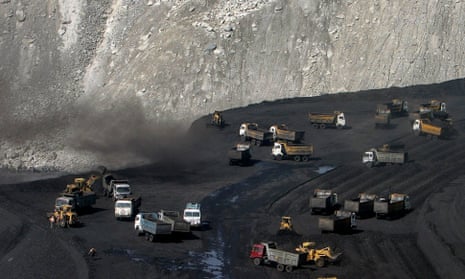Governments around the world are failing to match their green rhetoric with action in rescuing their economies from the Covid-19 pandemic, the UN has warned, with prospects for a “green recovery” in danger unless swift action is taken.
Countries are spending an unprecedented $14.6tn (£10.5tn) on trying to prevent economic collapse, seeking to protect jobs and save businesses on the brink of ruin. However, a UN-backed analysis of 50 leading economies has found only $368bn, or about 18%, of the rescue spending so far can be regarded as green.
Inger Andersen, the executive director of the UN environment programme (UNEP), said: “Humanity is facing a pandemic, an economic crisis, and an ecological breakdown – we can’t afford to lose on any front. Governments have a unique chance to put their countries on sustainable trajectories that prioritise economic opportunity, poverty reduction and planetary health at once.”
Investing in projects that cut greenhouse gas emissions, restore the natural world or repair environmental damage can lead to strong economic growth and create jobs, in the short and longer term, according to research from the University of Oxford, which led the UNEP analysis.
However, countries have been pouring money into existing industries and shoring up the high-carbon economy rather than seeking ways to create jobs in a sustainable fashion, the analysis found. The report, Are We Building Back Better? Evidence from 2020 and Pathways for Inclusive Green Recovery Spending, published on Wednesday, suggested only a few countries – including Denmark, Germany, France and Spain – were taking a green path.
About $66bn was earmarked for investment in low-carbon energy around the world last year, and nearly $29bn on research and development efforts for new green technologies, while about $35.2bn was announced for green building upgrades. However, some of this was from the UK green homes grant, which is in doubt after a troubled start.
Governments made plans for only $56bn of spending on projects involving the natural world, such as restoring degraded land, growing forests and protecting public lands. Experts say nature-based solutions can reduce carbon dioxide emissions, protect against the impacts of climate breakdown, for instance through flood prevention, and are a source of shovel-ready jobs.
Many opportunities around the world are being missed, according to Brian O’Callaghan, the lead researcher on the Oxford University Economic Recovery Project, and author of the report. Ways of creating green jobs, boosting the economy and tackling the climate emergency go far beyond investing in green energy generation and include: constructing electric vehicle charging networks; building fast broadband to help people work from home; creating cycle routes and remodelling roads to make green areas more accessible in cities; insulating homes; improving waste collection and expanding recycling plants; building flood defences; and planting trees.
O’Callaghan said governments had so far failed to see beyond the immediate need to staunch the losses of hard-hit industries, but would need to take a broader view soon. “Governments did not have that much discretion on support spending,” he said. “But now we are moving into a new phase [of economic recovery]. We are not so engrossed in the immediate needs and need to look at significant additional spending [on green projects] over the coming year.”
What concerns economists is that governments now have “fiscal space” in which to direct large quantities of public spending, but this may become limited within a few years. The sudden impacts of the pandemic have led many governments to tear up old rulebooks on deficits, balanced budgets and spending, and allowed for an expansion of public spending to keep economies afloat. So far there has been little impact on interest rates but at some point in the next few years governments may come under renewed pressure to rein in investment.
Steven Stone, head of the market and resources branch at UNEP, said there was still time but countries should seize the moment. “Recovery spending is still kicking in, and there is still more to come, so there is the opportunity for countries to up their game,” he said. “Governments have gone much further than anyone has gone before [in rescuing the economy] and there does not seem to be a huge downside, so this is the moment to recalibrate and invest in new infrastructure. We don’t know how long this fiscal space will stay open.”
Ed Barbier, a professor of economics at Colorado State University, who wrote a study on the recovery from the 2008 financial crisis, said governments must heed the lessons. “Reviving a brown [high-carbon] economy is not building back better. To green the post-pandemic recovery will require sustained public investments in support of green infrastructure and private research and development, coupled with pricing reforms that remove fossil fuel subsidies and tax carbon,” he said.
“Such reforms not only provide the incentives for a green transition but also the revenues to finance green public investments and compensation for any households and businesses adversely impacted by the transition. The need for such a green recovery strategy is becoming urgent if the UK, the EU and other countries are to deliver on their promise of net zero greenhouse gas emissions by 2050.”
